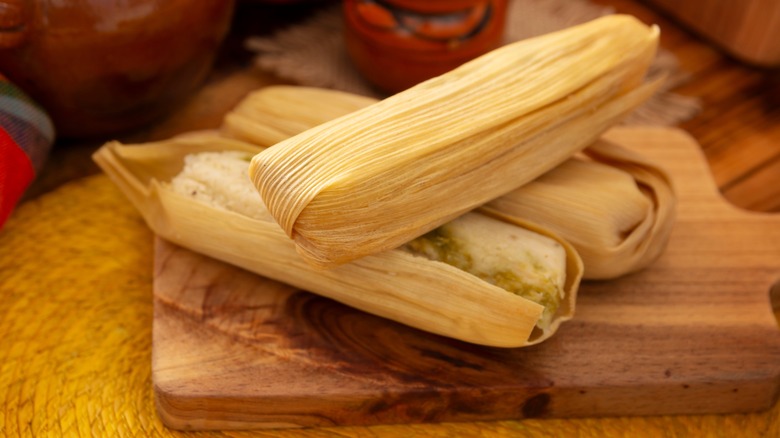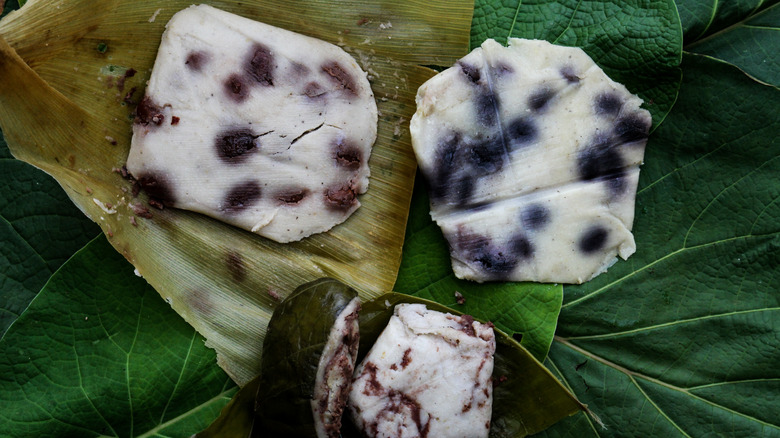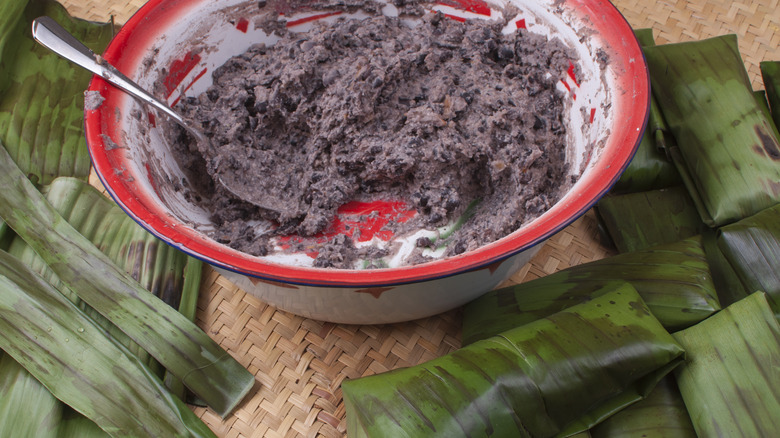The Overlooked Tamale Variety Rick Martinez Wants You To Try
Americans have come a long way when it comes to tamales. Not too long ago, most people in the U.S. would have only known tamales from a can, if they'd even heard of them at all. Thankfully, we've now left those behind with the lot of once-popular canned foods no one eats anymore, and now that Mexican restaurants makes up 10% of U.S. restaurants, more Americans than ever before are experiencing tamales as they should be. But the world of tamales is vast and varied. It is less of a dish and more of a broad category, like sandwiches, wherein all manner of ingredient combinations are possible, including some highly underrated options you need to try.
For an expert perspective on the best tamal varieties, we spoke to Rick Martínez, author of the cookbook "Mi Cocina." Martínez has traveled extensively throughout Mexico, and along the way, he's uncovered some truly exceptional tamales, one variety of which really stands out. "Along the Gulf coast," he says, "there are a lot of tamales that they just mix things into the dough and then roll them up and steam them." This breaks with the classic image of a tamal being simply masa wrapped around a filling, uniting both elements into one product. The best part, in the eyes of Martínez, is how easy they are to make at home.
A simpler way to make tamales
Martínez says, "For beginners, I think some people can get intimidated by the filling and the rolling and all of that." Most tamales involve this step, and it is undoubtedly the most difficult part of the process for newbies. Filling a tamal starts by smearing a bit of masa dough onto a dried corn husk. You have to spread on just the right amount of masa, leaving no gaps while at the same time being sure not to lay it on too thick. Then, you have to add just the right amount of filling and roll it into a neat package. Oh, and you have to do all of that without tearing the dry corn husk. It's a technique that takes practice to perfect, and if you're just getting started, making the type of tamales Martínez recommends would be much easier.
The simplest tamal you can start with is made with just masa and black beans. "Just take the black beans, and maybe even a little bit of the juice, and mix that into the dough," Martínez explains. Then, wrap the masa and bean mixture up and steam it, and just like that, you have a simple and delicious dish. There's also a unique visual appeal to this type of tamal, as Martínez says: "It looks cool because you see the little black dots on the outside."
Martínez loves vegetarian tamales like this
In addition to being incredibly easy to make, one of the greatest appeals of the simple black bean tamal is the fact that it's vegetarian. Most tamal varieties include some type of meat in the filling, although vegetables tend to feature in the mix as well, and their role in Mexican cooking is often overlooked, much like these simple tamales themselves.
If you want to make the tamal a little more substantial, Martínez recommends a variety he encountered in the Mexican state of Tabasco, along the southern Gulf Coast. "They do a black bean, but with a lot of veggies," which makes it heartier. "It's a lot of fresh green peppers and fresh corn and spicy pepper, onions, green onions, a lot of fresh herbs," he says. These are all must-have ingredients in Mexican cooking and make for an excellent vegetarian or vegan option. "As a meat eater," Martínez says, "I did not miss meat at all. It was just so good and so satisfying."


